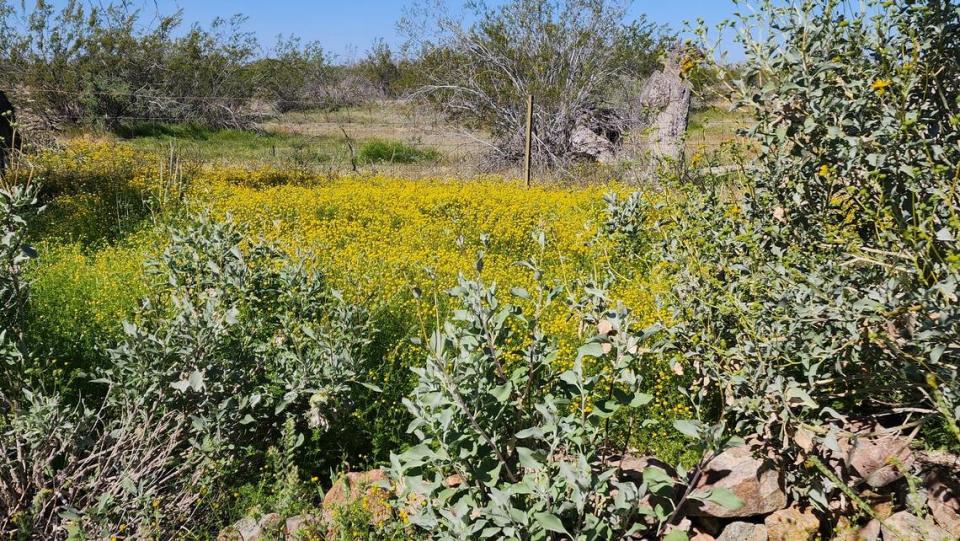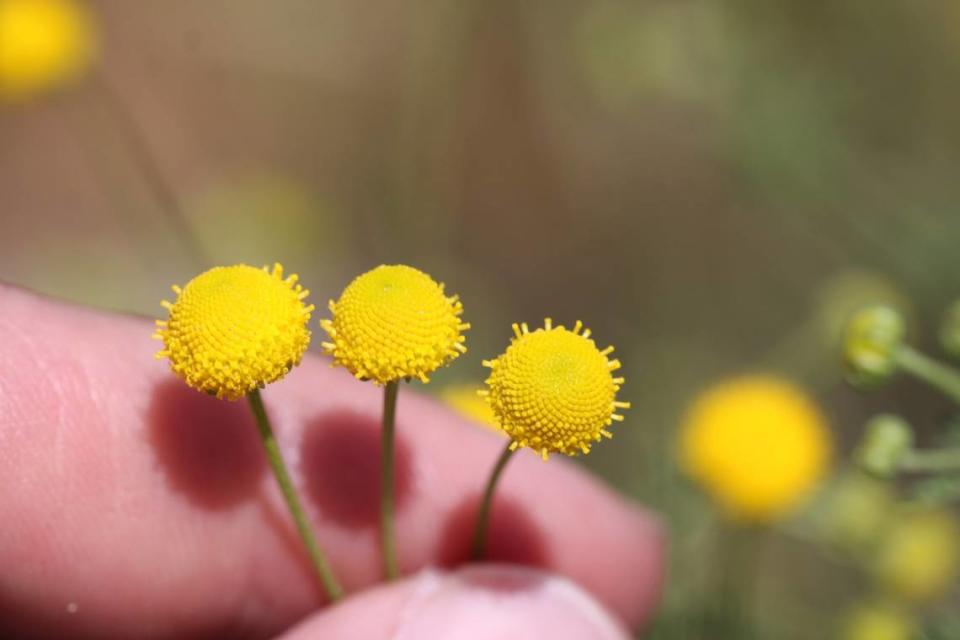Yellow ‘flowers’ are popping up at an AZ national monument. They aren’t what they seem
Bright yellow “flowers” popped up at an Arizona national monument — and they are a big problem.
The flowers are actually invasive weeds called stinknet that can spread rapidly and cause skin rashes and breathing problems. Because of this, officials are asking the public to help stop it from spreading.
Stinknet has taken root in Casa Grande Ruins National Monument, officials said in a March 27 Facebook post. The archaeological preserve is in Coolidge, a city between Phoenix and Tucson.
Officials are closing off the picnic area so workers can find a solution to manage the stinky plant that has carrot-like leaves and can grow up to 1 inch wide.

Weed also found in Saguaro National Park
But this isn’t the first time Arizona officials have alerted the public to the noxious weed.
Last month, stinknet was reported spreading in Tucson and within Saguaro National Park, McClatchy News reported.
“This is a really bad new invasive plant, probably the most troubling local arrival since buffelgrass in the 1930s,” the park said in a Feb. 28 Facebook post.
The weed spreads aggressively and has already invaded Phoenix, officials said.

What’s the problem with stinknet?
Like the name suggests, stinknet has an unpleasant tar-like or turpentine smell.
“The smell is so overwhelming it can give you a headache,” Brian Shomo, the Riverside County Habitat Conservation Agency’s director of natural resources, told the U.S. Fish & Wildlife Service.
The unwanted plant also grows in “dense mats,” the wildlife agency said. This becomes a problem when it overtakes native plants, such as Arizona wildflowers, Saguaro National Park said.
The weed starts to grow in October, then starts to seed in March and April, according to the University of Arizona’s College of Agriculture and Life Sciences. The seeds help stinknet spread rapidly.
By summertime, stinknet dries out and becomes wildfire fuel, and can spread flames to areas with more trees and shrubs, the school said. Burning stinknet can also cause respiratory problems for people inhaling it, the national park said.
How to stop stinknet from spreading
In Saguaro National Park, officials found it growing in a couple of spots in the Tucson Mountain District, which is on the park’s western side.
Officials are controlling these areas.
But the park is asking local communities in Tucson for their help keeping stinknet from spreading further.
“We cannot be everywhere at once, and we cannot adequately protect the park if we don’t know where it’s popping up nearby,” park officials said.
Anyone who sees stinknet growing in the national park, Tucson or southern Arizona in general should report it.
People can download the Survey123 app on their phone, with these instructions from park officials.
Reports can also be made to stinknet.org or iNaturalist.
If anyone spots stinknet in their yard, they can pull it out with gloves, but a report should still be made so officials can track its movement.
Be prepared for pollen season: Tips and research for allergy sufferers in NC
Tumbleweeds invade western towns, but you can profit off the pesky plants. Here’s how
Fruit to be stripped from trees at more than 2,000 California homes, state says. Why?

